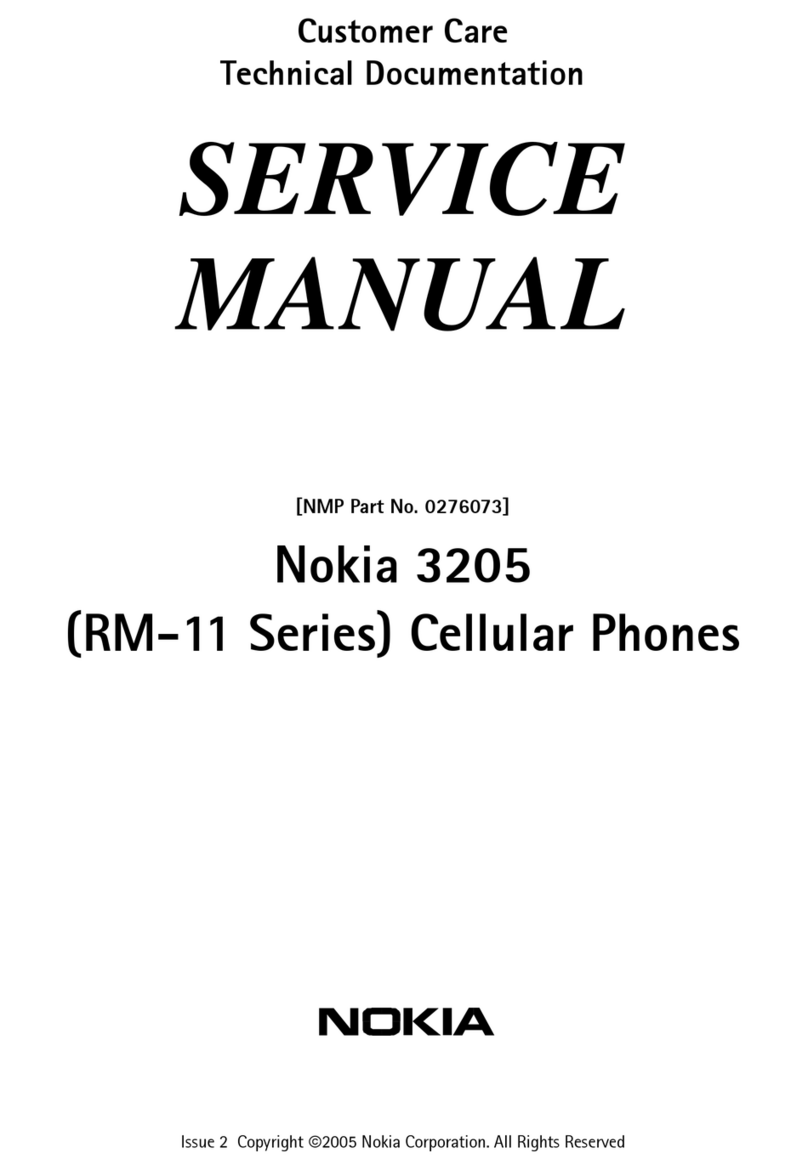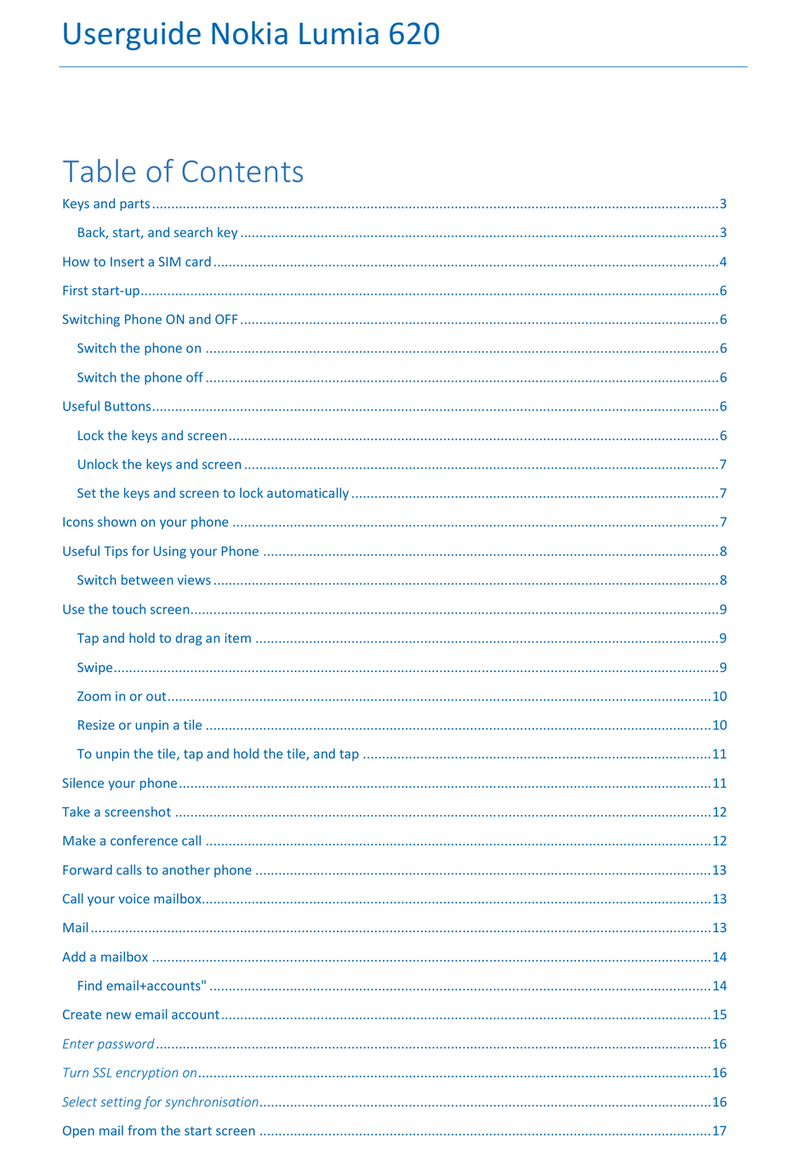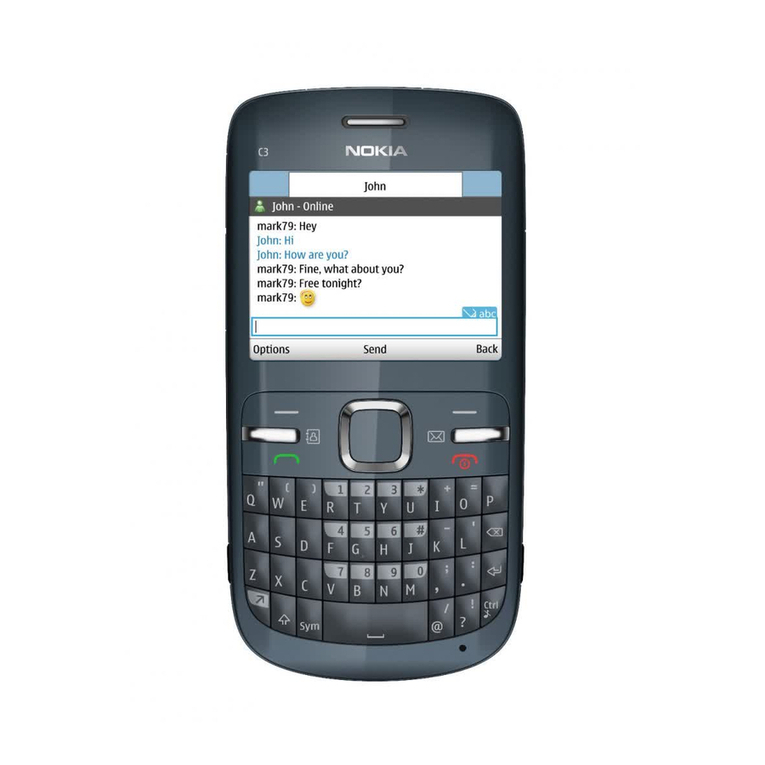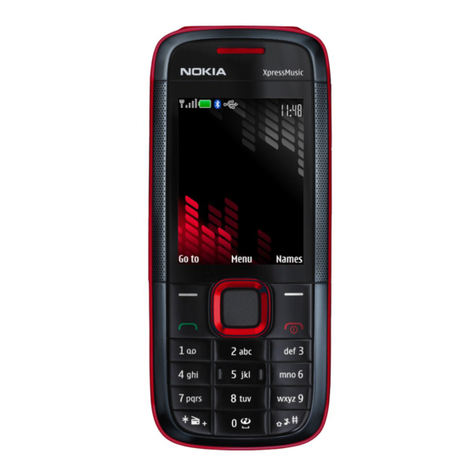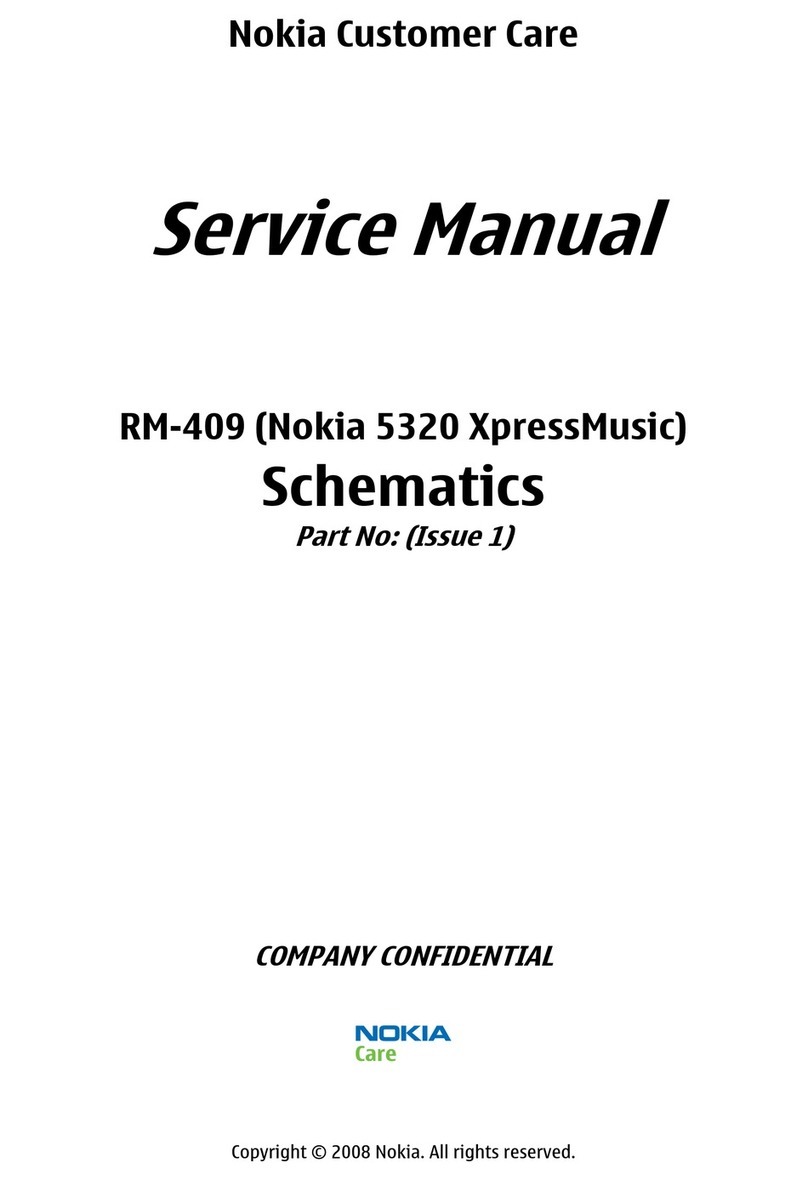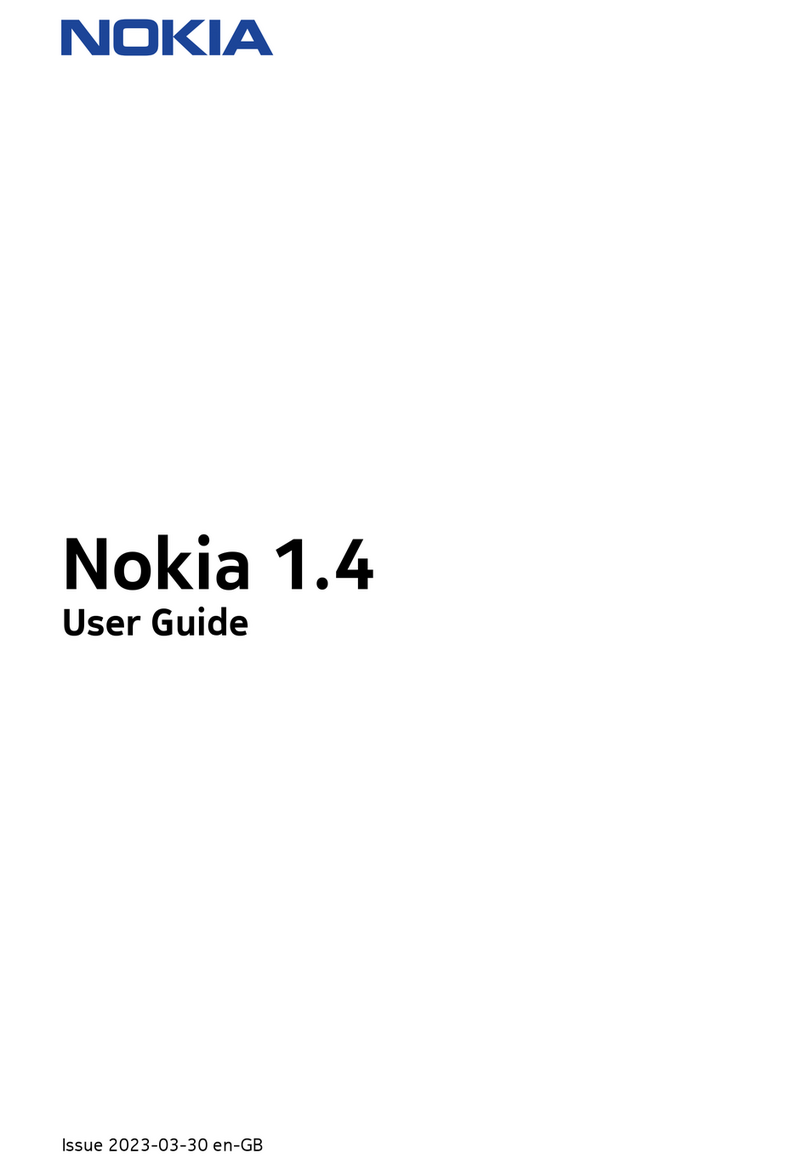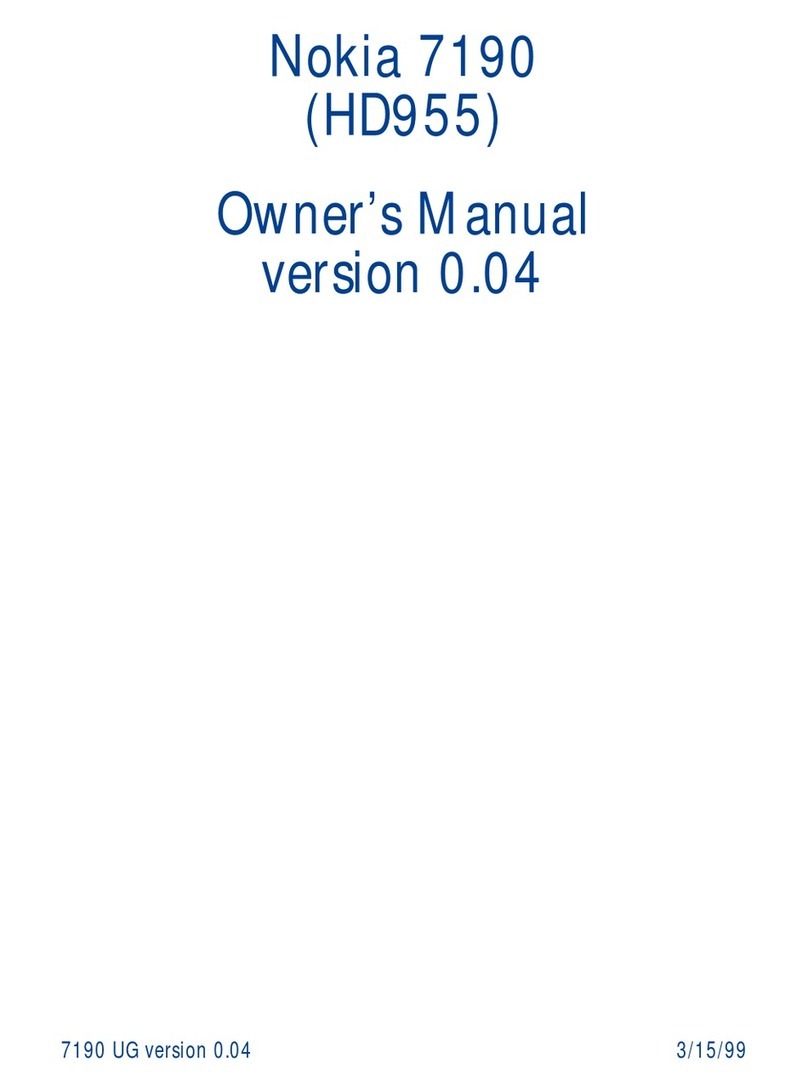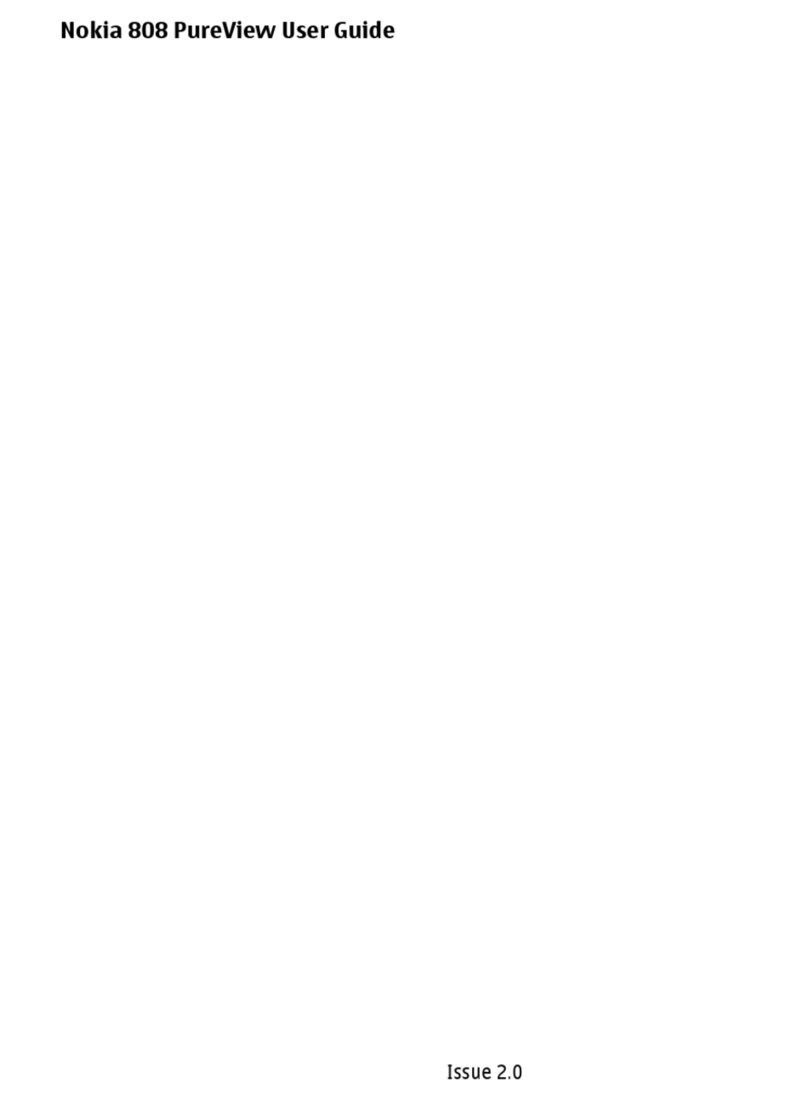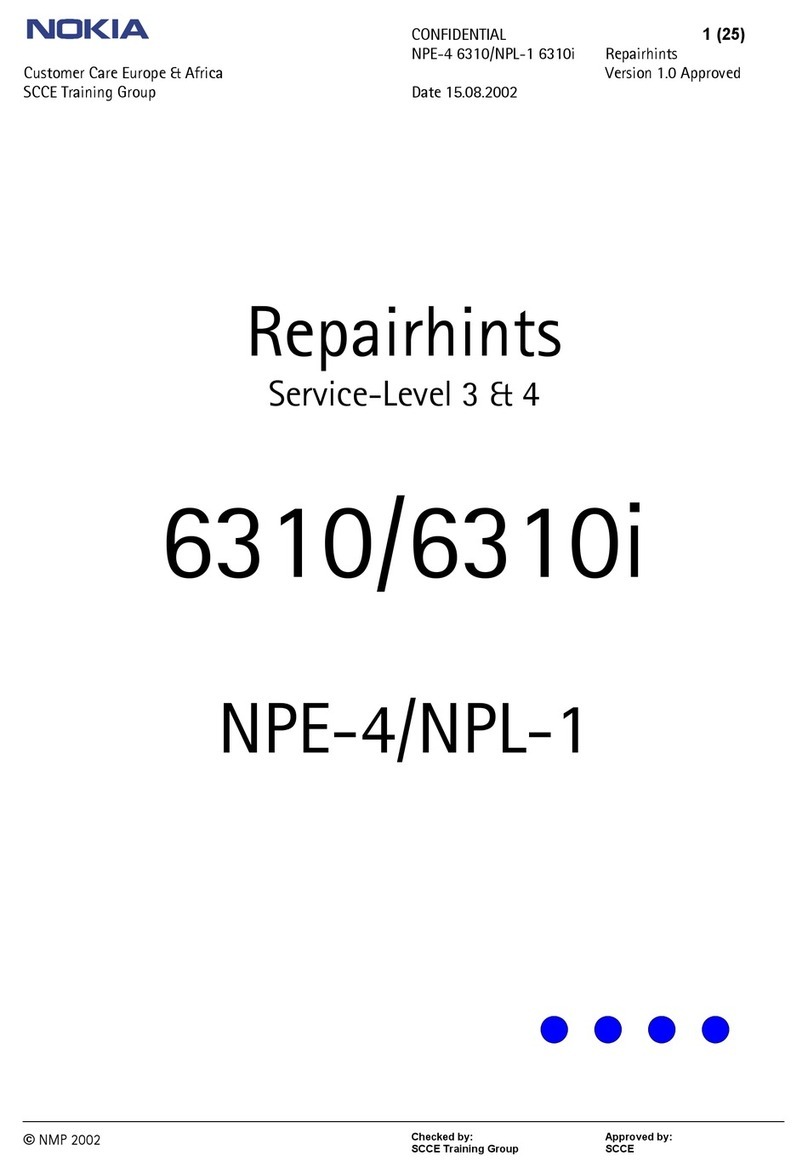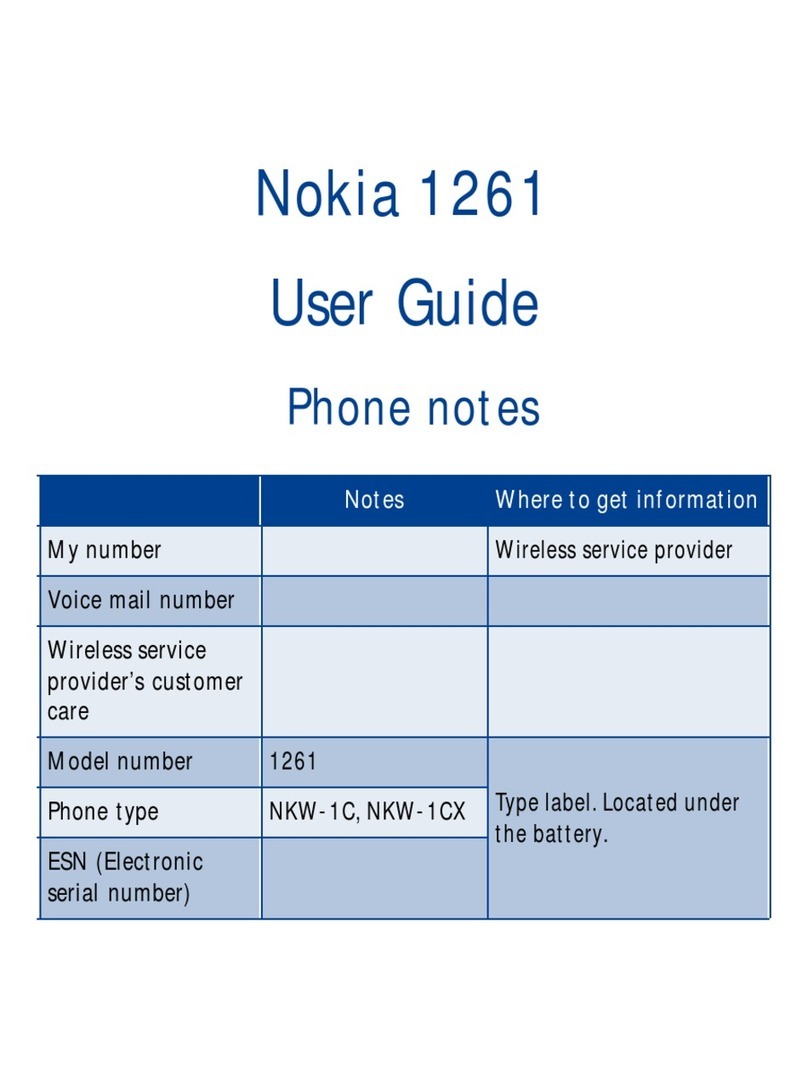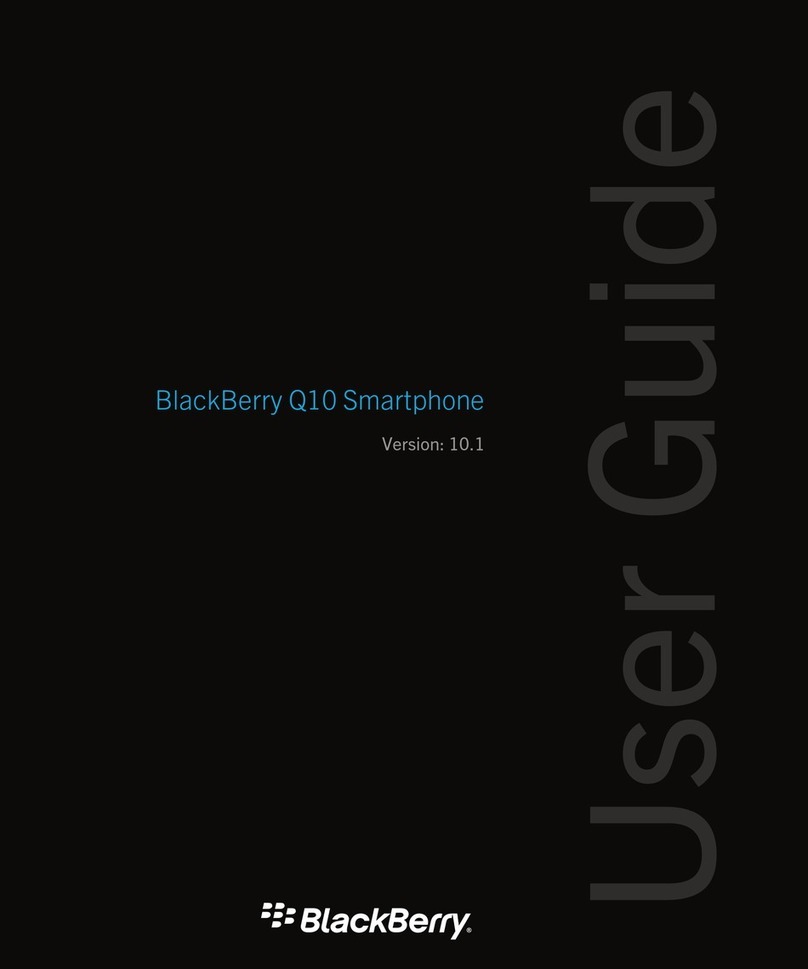
Introduction to RM-12 troubleshooting .........................................................................2
General guidelines for RM-12 troubleshooting .............................................................2
Tools needed for troubleshooting ............................................................................... 2
General guidelines .......................................................................................................2
RF Troubleshooting .......................................................................................................3
Introduction to RF troubleshooting .............................................................................3
RF Key component placement ....................................................................................4
RF Measurement points ..............................................................................................5
EGSM900, GSM1800 & GSM1900 Transmitter ..........................................................6
General instructions for Tx troubleshooting ...............................................................6
Additional information for EDGE troubleshooting ..................................................12
EGSM900, GSM1800 and GSM1900 Receiver ..........................................................21
General instructions for Rx troubleshooting ............................................................. 21
Synthesizer ..................................................................................................................28
General instructions for synthesizer troubleshooting ................................................ 28
Baseband troubleshooting ...........................................................................................33
Partially damaged device ..........................................................................................33
Most common symptoms reported by customer .......................................................33
Dead or jammed device troubleshooting .................................................................. 35
ASIC is changed ........................................................................................................ 40
Test points .................................................................................................................40
Selftests / “Contact service” on display ....................................................................40
Flashing troubleshooting ........................................................................................... 44
Power troubleshooting ..............................................................................................47
Audio troubleshooting ............................................................................................... 53
Display troubleshooting ............................................................................................60
Pixel defects ..............................................................................................................65
Backlight troubleshooting (1) ...................................................................................67
Backlight troubleshooting (2) ...................................................................................68
Backlight troubleshooting (3) ...................................................................................69
Hall sensor troubleshooting ......................................................................................70
Keyboard troubleshooting ......................................................................................... 71
Camera Module Troubleshooting ............................................................................. 72
Camera construction .................................................................................................79
Camera fault finding diagrams ..................................................................................86
FM Radio troubleshooting ........................................................................................89
USB Problems (1) .....................................................................................................93
USB Problems (2) .....................................................................................................94
BC3 Bluetooth Troubleshooting ...............................................................................95
MMC Troubleshooting (1) ........................................................................................ 99
MMC Troubleshooting (2) ...................................................................................... 100
Accessory troubleshooting ......................................................................................101
SIM troubleshooting ............................................................................................... 102
Vibra Troubleshooting ............................................................................................106
Clocks and Reset troubleshooting ........................................................................... 107

